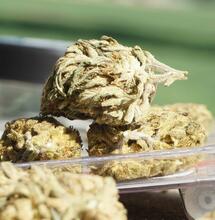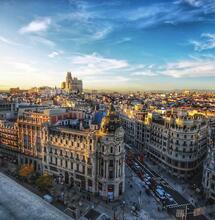Siting the Greenhouse

GROW WITH Jorge Cervantes
GROW WITH Jorge Cervantes
|
Growing in a greenhouse is very easy once the structure is set up and covered. Plants often grow so fast that they fill the entire greenhouse! |
Growing medicinal cannabis in greenhouses is efficient and much less taxing on the environment and pocketbook than gardening indoors. Unheated or heated and- cooled greenhouses extend seasons and protect plants from the lements.
Containerized plants are mobile, raised beds warm early, or you can plant directly in the ground. Greenhouses can also be equipped with lights to extend vegetative growth or augment natural sunlight. Greenhouses can be blacked out to induce flowering with a 12/12 day/night schedule during the summer.
The type of structure you select depends on the size and location of your growing area, your budget, and how much time you are able to dedicate to your garden. Small, moveable, “pop-up” greenhouses are convenient and practical. Simple cold frames and greenhouses can be assembled from common materials such as old framed windows and 2 × 4s (5.1 × 10.2 cm). Small heated-and-cooled greenhouses are a little more complex. Hoop houses are inexpensive, practical, and easy to install. Large commercial greenhouses are best purchased from and installed by professionals. A good specialized greenhouse can be used year round in most climates. However, heating and cooling costs vary in relation to climate and seasonal weather changes.
|
Plant in the earth or in containers when growing in a greenhouse. This gardener is experimenting with growing the same varieties in soil and in containers |
When deciding on a garden structure, first take a look at your budget in terms of both money and time. Greenhouses can be just as much or more work as an indoor garden. Start with a small greenhouse and learn the ins and outs of growing in your climate. Greenhouses tend to heat up quickly when the heat of sun hits them and cool rapidly when the sun goes down. Keeping the temperature from fluctuating too much can be difficult. It takes understanding, experience, and a little luck to master temperature management.
Start your greenhouse project by considering how much area you have for the footprint and how much space you will need for the desired number of plants. Think about how many plants you can grow. For example, if allowed to grow only six plants outdoors, they should be big plants.
Greenhouses must have:
- Full sun to partial midday shade
- Proper air circulation and ventilation
- Good humidity and pest control
- Water-resistant electrical outlets
- A hose bib to provide water
- Insulated water lines to avoid freezing, if necessary
- Tables, benches, and places to hang plants (if they are not on the floor)
- A dry place to store fertilizers, potting soil, and tools
Siting the Greenhouse
Choosing a site for the greenhouse may be easy because certain factors—size of backyard, property limits, location of existing buildings and trees, and so on—may already limit location possibilities. Greenhouses can be temporary or permanent. Permanent structures are more expensive to construct and may require a building permit.
|
Site the greenhouse where it will receive full sun all day long. Remember the sun may need to be blocked with shade cloth to cool the greenhouse. |
No matter what, greenhouses should receive ample light, especially when plants are flowering. However, midday sun could create more heat and problems than simple cooling and shading are able to control economically. In such a case, it is advisable to site the greenhouse in filtered sun or so that it is under filtered sunlight or a shadow during the hottest part of the day.
Unless square or round, site the greenhouse so that the sun passes from one end to the other rather than from one side to the other. This way plants receive the most direct light possible in relation to the path of the sun. Shadows are reduced to a minimum when the greenhouse is oriented parallel to the arc of the sun.
The site will dictate how plants are able to grow. A good site has:
- Super soil
- Lots of light
- Good ventilation
- Nutrients
- Water
- Flat land
- Easy access—you are able to drive to it to provide the tender loving care your plants deserve
Location and exposure will depend on climate, but in general, you will want the greenhouse to receive ample sunlight yet not be exposed to strong winds. The structure should be away from any areas where falling limbs or other debris might create problems. Greenhouses in hot and tropical climates will require more shade and water. See “Sighting the Garden” in chapter 12, Outdoors. It is packed with pertinent information about sunlight and siting gardens.
Types of Greenhouses
The type of greenhouse you choose is governed by your climate, your budget, and your desires. The first consideration is climate. An unheated greenhouse in the mild Pacific Northwest can easily extend spring and fall growing seasons by six weeks each, three months total. Coastal California gardeners can grow all year in the same greenhouse and spend little on heating or cooling. With a little heat and proper setup, a greenhouse can produce nearly year round in Michigan and other northern climates. But be careful when planting early in the year. Plants outgrow the confines of the greenhouse and are difficult to cover before harvest if weather is rainy.
Use small miniature greenhouses—cloches, plastic milk jugs, Wall-O-Water, and so forth—to extend the spring planting season by two to six weeks. Miniature greenhouses protect plants from cold weather and wind. They are easy to use when hardening-off transplants too. Extending the spring season could allow enough time to plant a spring crop and a fall crop in many climates.
Cloches are individual protective coverings that keep plants warm at night. A simple cloche is a plastic milk container with the bottom cut off and the lid removed. Placed over a plant, the plastic will capture and retain heat while allowing ventilation through the open top. You can make cloches out of wax paper, glass, and jars, or buy them. Commercial units are made of rigid transparent plastic or heavy-duty wax paper. They are easy to use and stack well for storage.
The Wall O Water is a plant lifesaver. It is a water-filled teepee that uses the heat-emitting properties of water to shield plants from excess heat and keep them warm in the cold. It holds three gallons (11.4 L) of water and fits over the plant. During the day, the water absorbs the heat of the sun, moderating the temperature inside the teepee. At night, as the air temperature drops, the water releases its heat, keeping the plant comfortable. The Wall O Water does its best work in the spring when there is still a chance of freezing. As water freezes, it releases more heat into the teepee and can protect plants down to 20°F (-7°C).
Covers protect early transplants and can help produce a spring crop. The most uncomplicated cover is a lightweight row cover spread over the plants and held down with stones or soil. Spun-fiber products Agronet™ and Reemay® also have sun-protection properties that can be used as covers in place of the sheet or blanket.
More greenhouses are described in the chapter “Greenhouses” in the Cannabis Encyclopedia.



